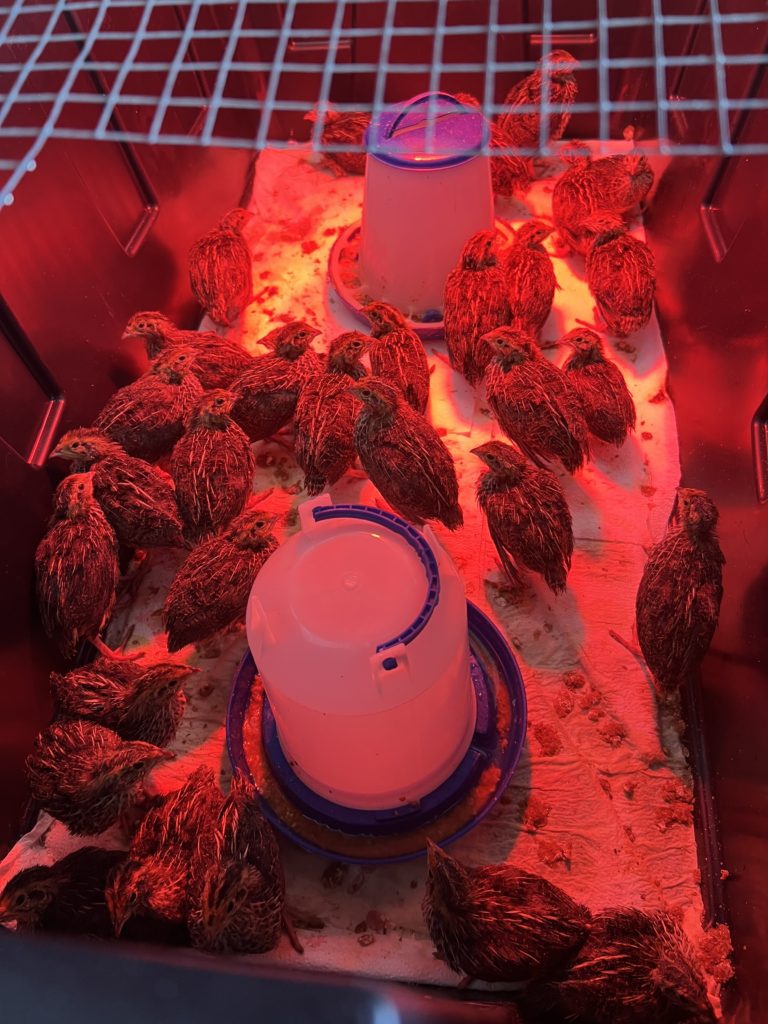Often we are asked, “What is the ideal temperature for coturnix quail chicks?” This is a vital question, especially for those who are ordering or hatching coturnix quail chicks. The first few weeks of a quail chick’s life are critical, and maintaining the right temperature is paramount to ensuring their survival and well-being.
We will explore the importance of temperature for coturnix quail chicks, the recommended temperature range for various stages of their early life, and tips to maintain a consistent and suitable environment.
The Importance of Temperature for Quail Chicks
Just like any other bird species, coturnix quail chicks are highly sensitive to temperature variations during their early days. They rely on external heat sources because they cannot regulate their body temperature immediately after hatching.
The right temperature ensures:
- Healthy Growth: It aids in proper digestion and absorption of nutrients.
- Disease Prevention: A consistent temperature reduces the risk of illnesses and infections.
- Survival: Extreme temperatures can be fatal to young chicks.
Temperature Guidelines for Quail Chicks
- First Week (Days 1-7): During the first week after hatching, the ideal temperature for coturnix quail chicks is between 95°F to 100°F (35°C to 37.8°C). This warmth mimics the natural heat they would receive from a mother quail.
- Second Week (Days 8-14): As the chicks grow and start to develop feathers, their need for external heat decreases slightly. During this week, the temperature should be maintained at around 90°F to 95°F (32.2°C to 35°C).
- Third Week (Days 15-21): By the third week, the chicks have more feathers and can tolerate cooler temperatures. The recommended range is 85°F to 90°F (29.4°C to 32.2°C).
- Fourth Week (Days 22-28): At this stage, the quail chicks should be fully feathered and are much more robust. Typically, at this age they will no longer need a heated brooder. If you intend to move your quail into extremely cold temperatures, you will need to gradually lower the temperature to allow them to acclimate.
Tips to Maintain an Ideal Temperature
Use a Reliable Heat Source: Brooder lamps with adjustable heights are popular choices. Ensure the lamp provides even heat distribution.
Monitor Regularly: Use a reliable thermometer to check the temperature. It’s essential to ensure that the entire brooding area has a consistent temperature.
Provide Space: Ensure that chicks have enough space to move closer or farther from the heat source based on their comfort.
Watch the Chicks’ Behavior: If chicks are huddled together directly under the heat source, they might be cold. If they are spread out and away from the heat, they might be too warm.
Safety First: Ensure that the heat source is secure and doesn’t pose a fire risk. Also, ensure that chicks cannot come into direct contact with bulbs or heaters.
Adjust for External Factors: If the external environment is cold, you might need to provide additional heat. Conversely, during hot weather, ensure the brooding area is well-ventilated.
While the ideal temperature for coturnix quail chicks varies as they grow, maintaining the right warmth is essential for their health and survival. Regular monitoring, understanding their behavior, and adjusting conditions as needed will ensure that these young birds thrive and grow into healthy adults.
